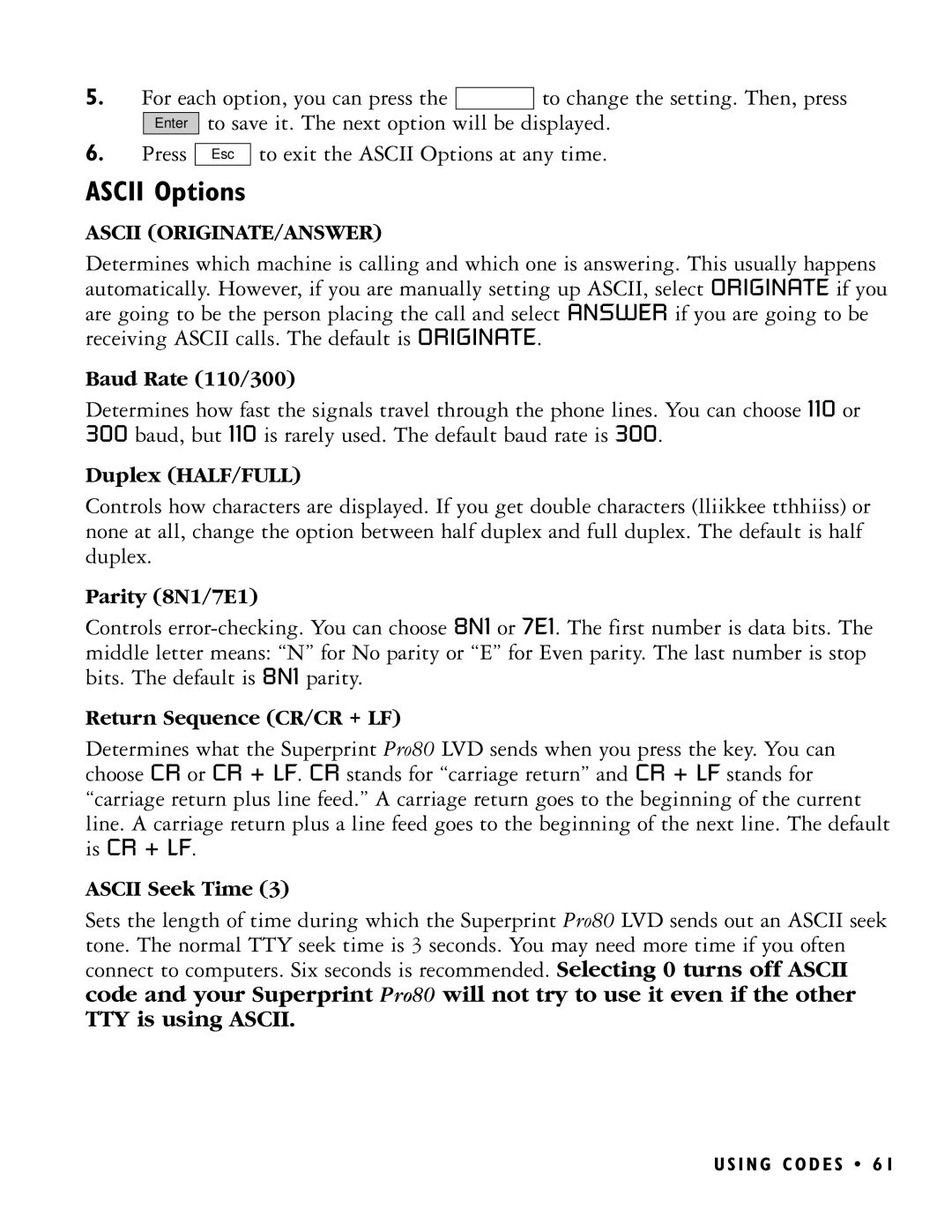5. | For each option, you can press the |
| to change the setting. Then, press | ||
|
|
| to save it. The next option will be displayed. | ||
|
| Enter | |||
6.Press
Esc
to exit the ASCII Options at any time.
ASCII Options
ASCII (ORIGINATE/ANSWER)
Determines which machine is calling and which one is answering. This usually happens automatically. However, if you are manually setting up ASCII, select ORIGINATE if you are going to be the person placing the call and select ANSWER if you are going to be receiving ASCII calls. The default is ORIGINATE.
Baud Rate (110/300)
Determines how fast the signals travel through the phone lines. You can choose 110 or 300 baud, but 110 is rarely used. The default baud rate is 300.
Duplex (HALF/FULL)
Controls how characters are displayed. If you get double characters (lliikkee tthhiiss) or none at all, change the option between half duplex and full duplex. The default is half duplex.
Parity (8N1/7E1)
Controls
Return Sequence (CR/CR + LF)
Determines what the Superprint Pro80 LVD sends when you press the key. You can choose CR or CR + LF. CR stands for “carriage return” and CR + LF stands for “carriage return plus line feed.” A carriage return goes to the beginning of the current line. A carriage return plus a line feed goes to the beginning of the next line. The default is CR + LF.
ASCII Seek Time (3)
Sets the length of time during which the Superprint Pro80 LVD sends out an ASCII seek tone. The normal TTY seek time is 3 seconds. You may need more time if you often connect to computers. Six seconds is recommended. Selecting 0 turns off ASCII code and your Superprint Pro80 will not try to use it even if the other TTY is using ASCII.
U S I N G C O D E S • 6 1
